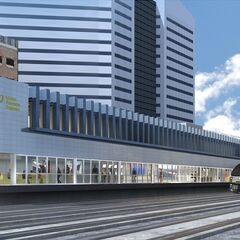EnviroTO
Senior Member
A people mover to a GO stop has its own serious flaws. GO service on that line, and probably for a while to come, is hardly great. What is the frequency on trains going downtown? If you have to wait an hour for a GO train, how great is that kind of service?
The frequency of service is set by how often the train runs and not whether or not it goes to the airport. The reality is that there is a better business case for more frequent service when you aren't servicing only a single origin and destination. By running all-stops Brampton to Union there are more people to ride the train and therefore greater frequencies are more viable. Why would there be an assumption that Air Rail Link run by Metrolinx every 20 minutes is possible but frequent service to Malton by Metrolinx is beyond their capability?
And adding yet one more transfer, especially with people with baggage to lug around, makes it even less attractive. It would basically be the same setup as the Newark Skytrain and rail link to Manhattan and after using it I have to say it is an option that should not be replicated.
It is the same as Newark, Dusseldorf, Tokyo Haneda, JFK, Paris Orly, etc. Considering the number of people who don't check luggage anymore is so high it is the same a Atlanta, Tampa, and every other airport where you take internal transportation to get to the plane. Even with the Air Rail Link you are not able to access T3 without a transfer to the cable car.



















